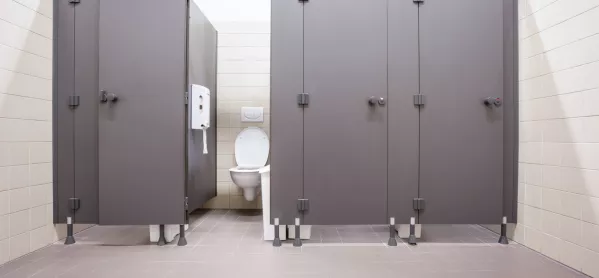- Home
- Should teachers be expected to toilet-train pupils?
Should teachers be expected to toilet-train pupils?

Children don’t come with an instruction manual, even if most people wish they did. Then they hit the toilet-training milestone…stress levels rise, floors have never been so clean, and the wine fridge gets emptied daily.
Then it’s time for school, and children are handed over to teachers. This can seem by far the easier option: let the teacher take care of it.
So what do you think? Is it a teacher’s job to step in and help when a child is having an accident?
I believe the answer is no. It is not their job. However, with my many years of experience in the sector, I think it’s better to try and work together to solve the problem, as a parent-teacher team. That way it can be rectified quickly, so it does not become a long-term issue.
Toilet training: When it just doesn’t happen
Nonetheless, I would not expect the teachers to be expected to take control of toilet training as a whole. This is on the parents, who must try and make sure that their child is toilet-trained before starting school.
Unfortunately, for some parents, this just doesn’t happen. And we mustn’t blame them, or the child.
From speaking to parents whose children have accidents at school, I have the impression that teachers are generally understanding for the first half-term that a child is at school. School is an unusual environment for the new pupil, and they’re getting used to their new surroundings, while trying to remember where everything is.
In particular, starting school this year has been very unsettling for children, and this has been reflected in an increased number of toilet accidents. The pandemic has created a very unusual set of circumstances, and this can and will affect pupil behaviour.
In Reception classes, teachers should expect their new children to have the odd accident until they have settled in and are used to their new environment. But the children shouldn’t be coming to school in nappies or soiling themselves. Unfortunately, some will. And it’s about working with the parents to get this sorted as soon as possible.
School toilets: not an inviting environment
It’s vital to make it clear to parents that your role is to teach children the curriculum, not how to use the toilet. Instead, why not provide some practical written tips for the parents to work with at home? Check in once a week to see how they are getting on. Also, be sure to check regularly whether the child in question needs to use the toilet.
With teaching assistants’ hours being reduced nationwide, teachers are often left on their own with 30 or more children. And trying to clean a soiled child, while keeping the rest of the class under control, can be a real issue.
So where does this leave the teacher and child, if the child is having frequent accidents and there isn’t another adult available to help?
School toilets are not the most inviting environment, nor a place small children are excited about visiting. Pupils often talk about the dripping tap, the funny smell of chemicals, and the toilet paper the same texture as sandpaper. I’ve visited many school toilets through my work and, I have to say, I can see where they are coming from.
So we need to invest in making school toilets a happy, warm and inviting environment, which children genuinely want to visit. Let’s have some colour, and some pictures showing the children what they need to do. This will help them achieve the necessary confidence to go into the toilets.
Accidents in school can affect children’s confidence. And it is disruptive for both the teachers and the rest of the class. So why don’t we start talking more with parents about this? Why not speak about it in the classroom with the children themselves, too? Let’s make using the toilet a subject we can talk about - after all, it is something we all have to do.
Amanda Jenner is a potty-training guru and children’s behavioural expert. Visit her website here
Register with Tes and you can read two free articles every month plus you'll have access to our range of award-winning newsletters.
Keep reading with our special offer!
You’ve reached your limit of free articles this month.
- Unlimited access to all Tes magazine content
- Save your favourite articles and gift them to your colleagues
- Exclusive subscriber-only stories
- Over 200,000 archived articles
- Unlimited access to all Tes magazine content
- Save your favourite articles and gift them to your colleagues
- Exclusive subscriber-only stories
- Over 200,000 archived articles